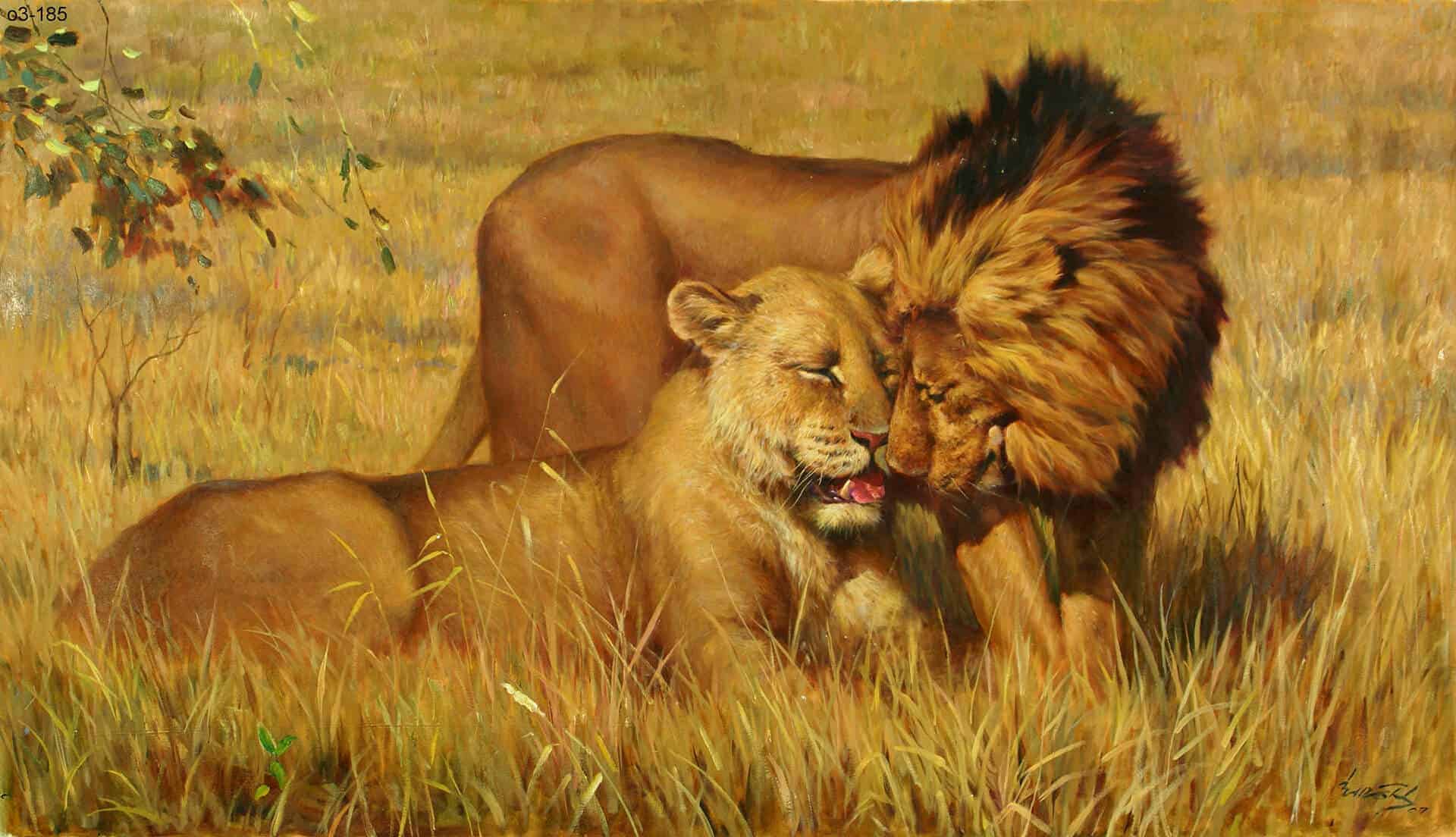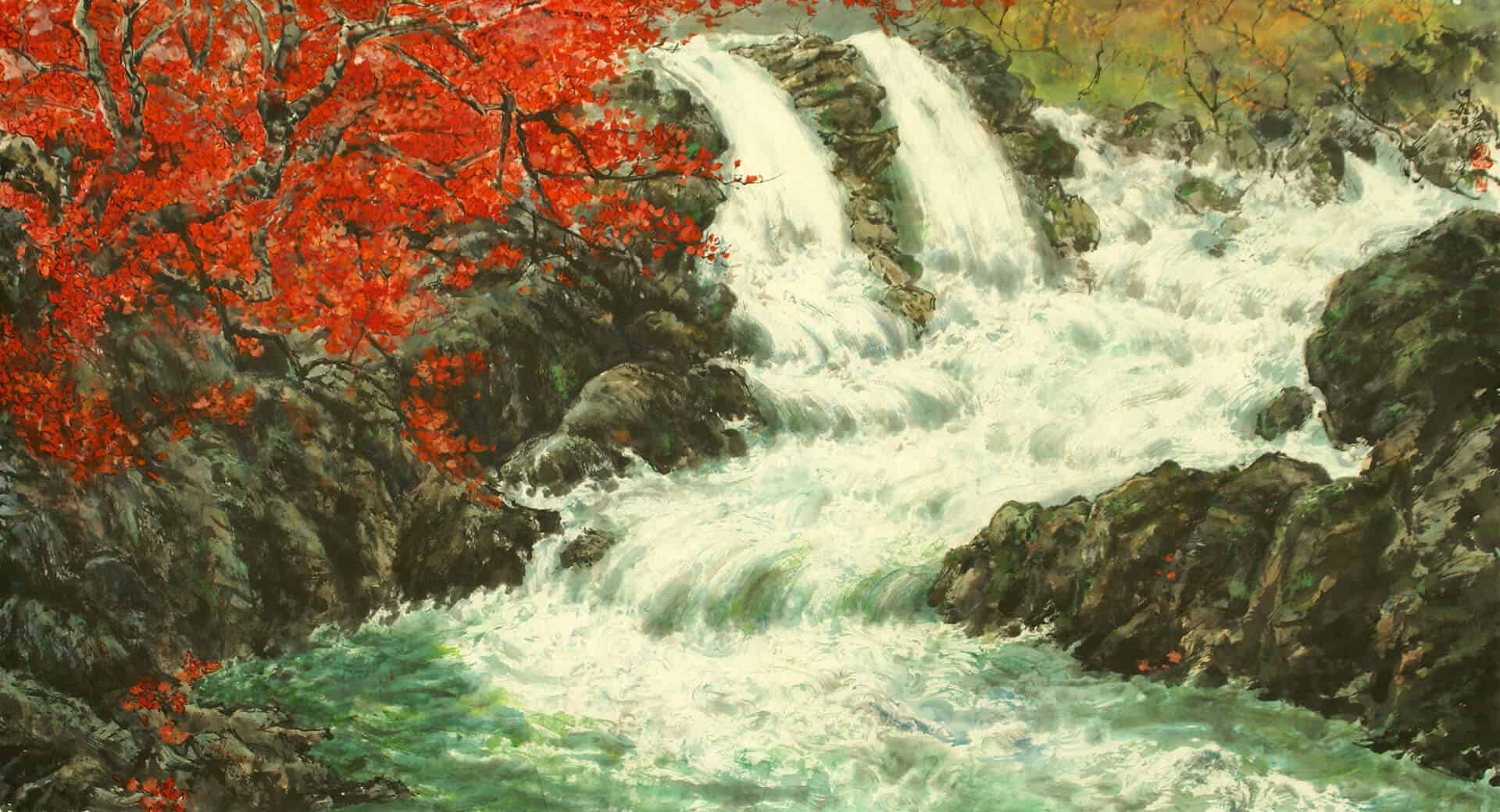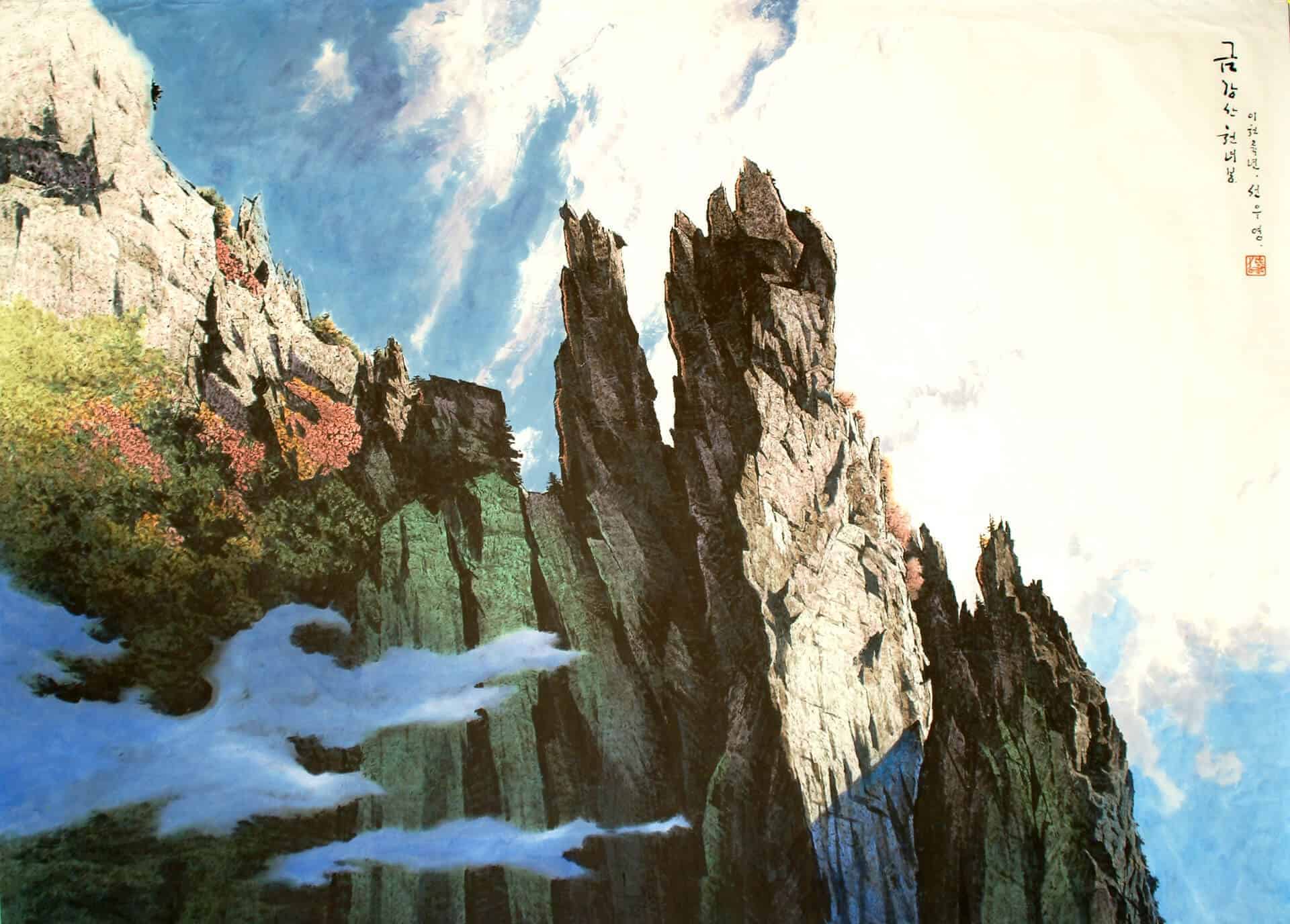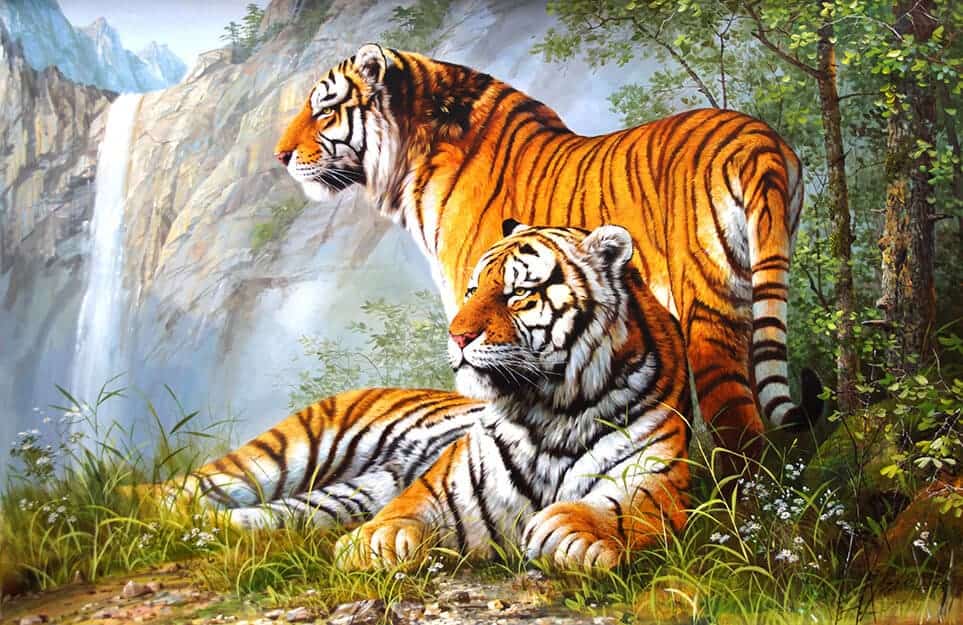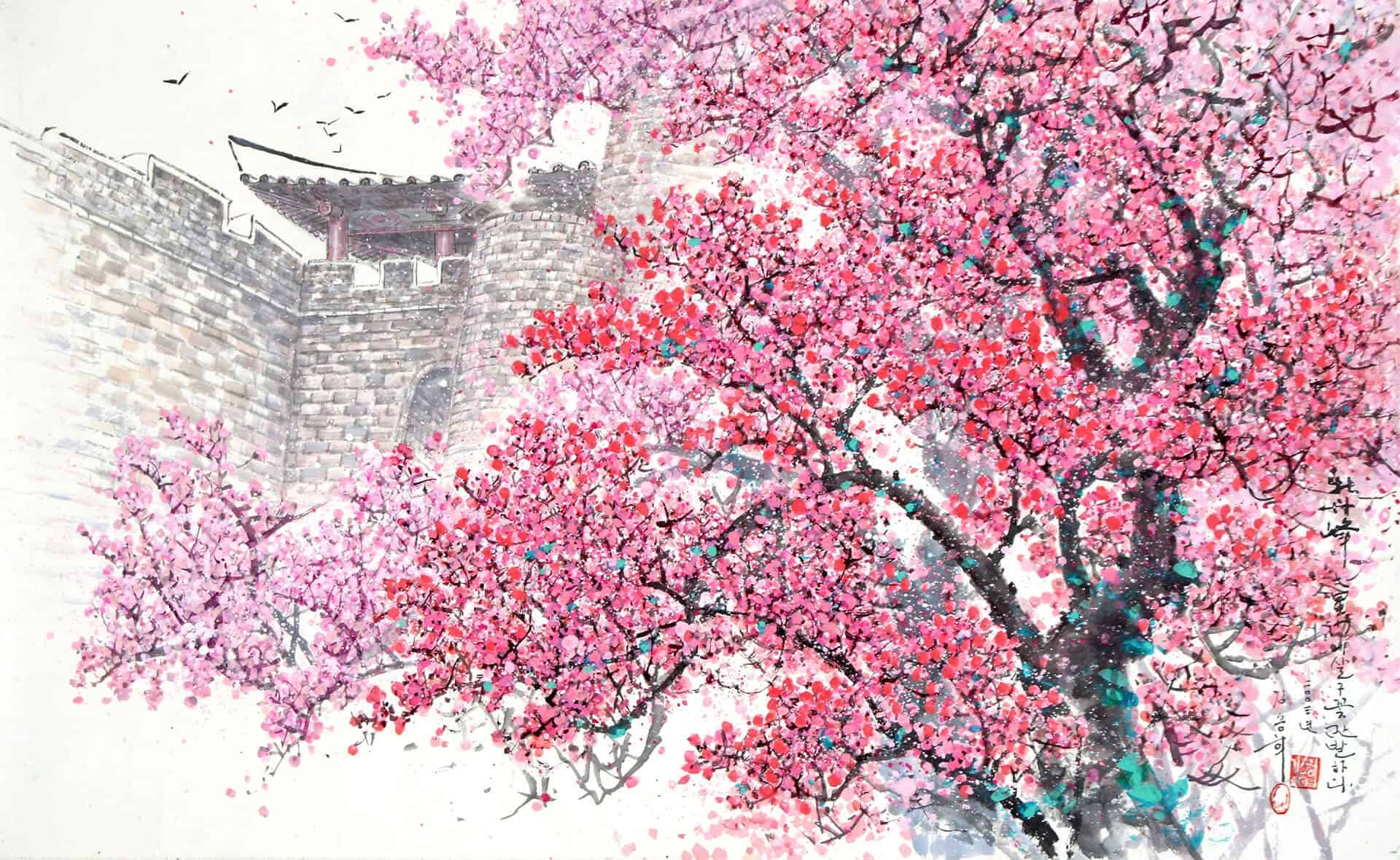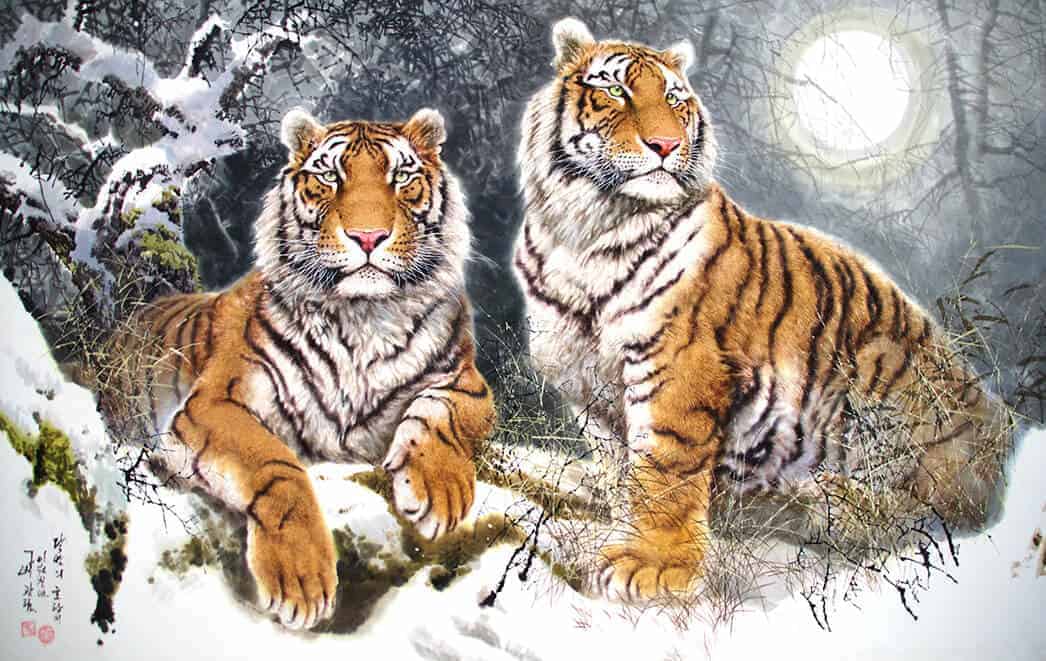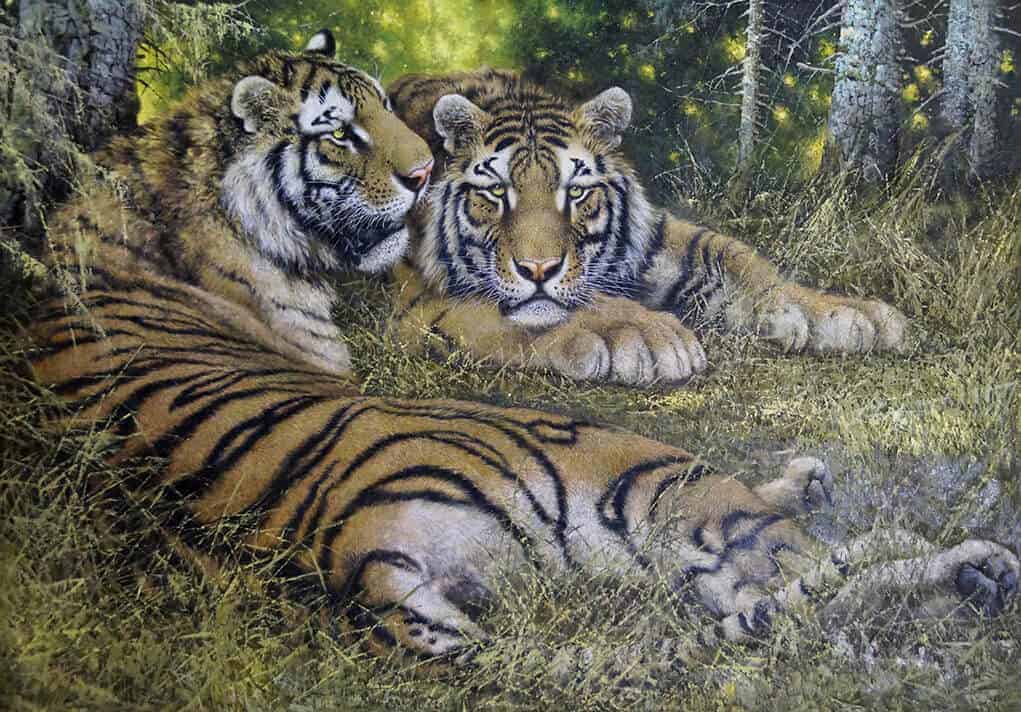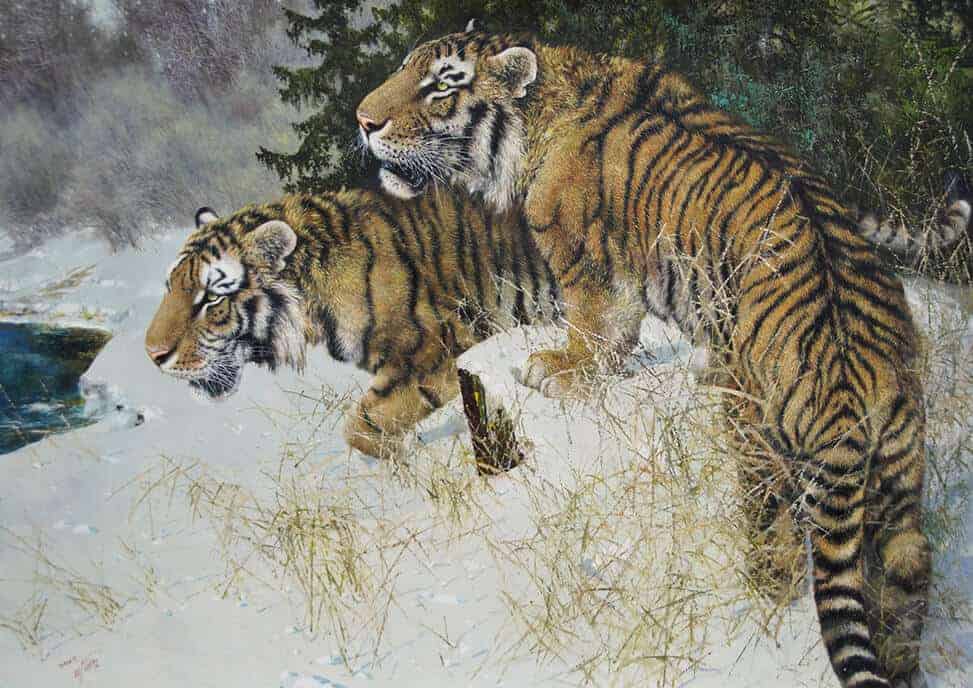Categories
All paintingsKorean tiger paintings
The tiger has a very special place in Korean culture and in the hearts of Korean people. It is found in mythology, folklore and is a favourite subject in paintings and sculptures. It was even the mascot of the 1988 Summer Olympics held in Seoul, South Korea.
In Korea, the tiger is regarded as a guardian that drives away evil spirits. A sacred creature that brings good luck and the symbol of courage, strength and absolute power. According to the Chinese zodiac, 2022 is the year of the black tiger. People born in this year are said to be courageous, bold and confident like the feline itself.
The birth of Korean civilization
The oldest historical mention of the tiger can be found in the myth of Dangun. The legendary founding father of Joseon and ruler of the first kingdom on the Korean Peninsula. According to the myth, a tiger and a bear prayed to Hwanung, son of Hwanin Lord of Heaven, and asked desperately if they could become human beings. Hearing their prayers, Hwanung gave them both twenty cloves of garlic and a bundle of mugwort. Ordering them to eat only this and remain in a cave for a hundred days. After twenty days, the tiger could no longer endure this ordeal, gave up and left the cave. The bear however persisted and was turned into a woman who eventually gave birth to Dangun, the mythical founder of Korea. It is considered the birth of Korean civilization.
The most popular motif in folk art
In total, there are 635 historical records about tigers in the annals of the Joseon Dynasty (1392–1910). There is a 19th-century painting named Sansindo which depicts the guardian spirit of a mountain, leaning against a mythical white tiger or riding on the back of the animal. The animal is known to do errands for the guardian spirit, which is known to wish peace and wellbeing on the nearby village. The guardian spirit therefore orders the mountain tiger to give his protection to the village. This is why the tiger became one of the most popular motifs in Korean folk painting, known as minhwa, and made by common people. In Buddhism, there is a shrine that keeps the painting of the guardian spirit of the mountain, called Sansintaenghwa. It is the depiction of the guardian spirit of the mountain and a tiger.
A sacred and friendly symbol
Tigers are also often featured as guardian deities in funerary art. The white tiger especially is one of the four guardian deities of the four directions. The four guardian deities were traditionally painted in tombs because people believed they would make it a sacred place. They can also be found around royal tombs. To safeguard the tomb, they placed stone tiger sculptures. The sacredness of this animal was also part of ancient rituals. According to historical records, a tiger head was offered as the sacrificial offering when performing a ritual praying for rain.
Paintings of tigers portray them as magnanimous symbols of superiority. As well as sacred animals that drive away evil spirits. They are part of the longevity symbols such as cranes, deer, fungus, rocks, water, clouds, the sun, moon, green pine trees and tortoises. Significant for Korean paintings is how the tiger is portrayed. Almost never as a ferocious beast, but mostly with a stern expression or as a friendly and sometimes even comical and clumsy animal. Also referred to as ‘idiot tiger’. This style reflects not only the values of virtue and benevolence, but also the cheerful and optimistic spirit of the Korean people.
The Kaesong Collection
The majority of current Korean painters still follow the path of tradition. Each nature’s motif gives meaning to a certain conception of value, such as spiritual strength, firmness, longevity and wisdom.
The Kaesong Collection, of high quality North Korean art works, unfolds a stylistic and genre panorama of Korean contemporary painting and brings out two aspects in the development of Korean painting. One is associated with long art traditions of Korea, the East Asian countries and their art heritage. The other, more modernist trends in the arena of world art. Containing the finest contemporary and modern oil paintings, watercolours and drawings. This makes the Kaesong Collection such an exclusive collection.
WHAT IS THE KAESONG COLLECTION?
The Kaesong collection is a unique selection of high quality Korean art works. It is acquired in the most isolated country in the world: North Korea. These hidden treasures contain the finest contemporary and modern oil paintings, watercolours and drawings. They are created by Korean artists, like Jong Chang Mo, Son U Yong, Rim Ryul, Tak Hyo Yeon, Kim Sung Hui, Kim Song Min and many others. Among them are several prize winners at international exhibitions held in Asian countries. They are widely acclaimed in South Korea, China, Japan, The Philippines and Thailand.
HOW DID THE KAESONG COLLECTION CAME TO BE?
Curiosity, love for art and an interest in long-term investments in art made Frans Broersen (owner of Springtime Art Foundation) decide to visit North Korea. With intensive negotiations and help from the North Korean Embassy in London, he finally got the invitation from the Korean government by the Ministry of Culture of North Korea. After his first visit, Frans was confident of the possibilities and quality of North Korean art. Back home, he formed a team of people to combine knowledge, money and workforce to start purchasing works of art. Several visits and many acquisitions later, the Kaesong Collection took its shape.
WHAT IS TRADITIONAL KOREAN ART?
Korean art consists of paintings, calligraphy, music, mulberry paper art, decorative knot making, pottery like celadon, sculptures and other forms of art. The beauty of Korean art and the strength of its artists lies in simplicity, spontaneity and a feeling of harmony with nature. It values tenderness, a sense of balance, serenity and harmony. It is distinguished for its simple and elegant composition. The majority of today’s Korean artists still follow the path of tradition. Each nature’s motif gives meaning to a certain conception of value, such as spiritual strength, firmness, longevity and wisdom.
WHAT IS UNIQUE ABOUT KOREAN ART?
In the course of history, Korean culture and art has been influenced by Chinese styles, obliged by Japan during the Japanese occupation period (1910-1945) and inspired by European styles in the modern era. But it has always kept its own unique style, elements, traditional symbols and patterns. Which all have their own meaning and representation.
In Korean art you find the concept of naturalism, and it is characterized by its non-complex and harmonious composition, due to a deep connection with their natural surroundings. Korean artists try to portray nature as true to life as possible. And even though the art scene in Korea has been influenced by different art movements, it has over the past centuries developed a distinctive style of its own. Based on the rich traditional and cultural history of Korea.
WHAT IS THE MOST FAVOURITE SUBJECT OF KOREAN PAINTINGS?
- Popular genres throughout the centuries are:
- Daoist Paintings depicting the ten longevity symbols known as shipjangsaengdo. Which are: the sun, clouds, mountains, water, bamboo, pine, crane, deer, turtle and the mushroom of immortality. They are often all represented in a single picture.
- Buddhist and Confucian paintings; showing the Buddha and Confucian art portraying as scholars wearing the traditional stove-pipe hats and monochromatic robes. Usually depicted in a teahouse near mountains or at mountain lodges.
- Persian hunting scenes; often seen in Korean courtly art.
- Decorative Painting; the vast majority of ancient folk painting, were used for decorative purposes.
Popular subjects are:
- The Four Gracious Plants, also known as the Four Gentlemanly Plants
- Portraits
- Minhwa (Korean folk art)
- Genre and Landscape Painting
